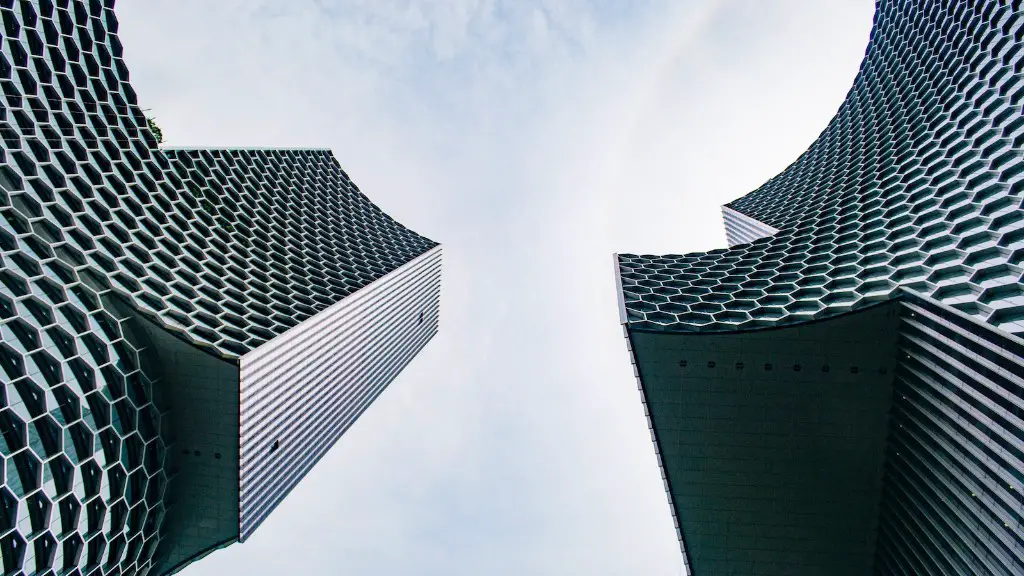Architecture is often labelled as a mere craft, with its practitioners sometimes disregarding a much larger ethical and social impact the built environment holds and the communities it affects. While architecture is commonly linked to providing shelter, the field and its practices are much more than the functional capabilities of a building, which should be addressed to make our cities healthful and beautiful. Architecture fulfills its potential as an emancipatory project when it provides an avenue for participating individuals to be focused on social and environmental impact, amongst meeting the functional needs of the users.
The idea of emancipation is not new. Being explored for the first time in the 18th century, the term has never been associated explicitly with architecture, although some theorists have used architecture as a tool to address discipline, power and social imagination. Drawing from both emancipatory philosophies and the elements of architecture, along with their production and use, an emancipatory practice in architecture can be articulated.
The relationship between architecture and empowerment is complicated. It has been well documented that the built environment is a tool to maintain power, status and hierarchies. The relationship between architecture and power has been explored in depth by Siegfried Giedion, who noted that architecture is a “metaphor of history”. It is the product of decision-making and political will, and when these decisions are made consciously and based on social justice, emancipation is possible. Studies such as those by Dan Hill, who suggest that human emotion and experience play a central role in the way architecture shapes our society, also support emancipation in architecture. Dan Hill’s work suggests that architecture is a tool for socio-cultural change that can build passion, continuity, social harmony and liberation.
Emancipatory architecture seeks to: create more participatory contexts to allow people to shape their built environment; promote social justice and diversity; promote equity and equal opportunity; and, take advantage of the opportunity to combine a range of people in a shared setting. It assumes that the design and development of the built environment has implications beyond physical form, but also in terms of its political, economic, and social impact. For example, those occupying spaces with emancipatory architecture are not isolated from the effects of their physical surroundings, nor are they excluded from any potential cultural benefits. Additionally, it requires a sense of public confidence and ownership in the project, with the architects and planners taking a proactive role in facilitating public participation. All in all, emancipatory architecture is about enabling individuals and communities to take control of their environment in order to create new possibilities and futures.
Citizen Experiences
Citizen experiences are at the core of the emancipatory architecture approach. These experiences are designed to allow citizens to engage with the process of designing and developing their environment, with the intention to amplify their voices in the decisions that shape their living spaces. For example, in Bogota, Colombia, former Mayor Enrique Penalosa created an initiative to involve the citizens and neighborhoods in the planning process of their built environment. The “Citizens’ Participation Councils” held events such as neighborhood workshops and community conferences, where citizens were able to come together and discuss various aspects of their environments, such as design, mobility and public spaces. This type of experience is a model for how emancipatory architecture can be undertaken in a broader context.
In addition to public participation experiences, designing spaces that ‘allow’ citizens to be involved, such as the “Bogotá model”, are also core to emancipatory architecture. These spaces should provide opportunities for citizens to build relationships, develop self-esteem and influence the process of decision-making, which can be done through the use of participatory design. For example, urban villages in China have been set up as shared spaces for locals to conduct public activities, encouraging public engagement and community engagement.
Creating emancipatory experiences also calls for a new infrastructure that can support the development and delivery of these experiences. This infrastructure needs to be supported by not just the physical environment, but also by the political environment, economic environment, the legal framework and community engagement. These can help to facilitate interactions, trust and a sense of belonging, and can create an environment where individuals are able to express themselves and make their voices be heard.
Civic Participation
Civic participation is a crucial element of emancipatory architecture. Civic participation means actively seeking out citizens’ opinions and involving them in the decision-making process about their built environment. This includes engaging with public and private organizations, businesses, universities and other bodies in order to ensure that the designs and strategies of the architecture are both economically and socially beneficial, as well as reducing barriers to participation. Examples of this could include, but are not limited to, neighborhood meetings and events that enable citizens to give feedback, Citizen’s Academies and housing association meetings.
The concept of participatory budgeting has also been championed as a tool of emancipatory architecture. It is a decentralized procedure where citizens can express their opinions, formulate and agree on budgets, and even become more directly involved in the allocation of funding. This type of process is thought of as a way to improve democracy, by allowing people to become more actively involved in their city’s decision-making process, taking the power away from institutions and structures of power and handing it over to citizens instead.
Online platforms are becoming increasingly popular in empowering citizens to take control of their built environment. Sites such as BrightNeighborhood, Placespeak and UrbanPlanningHQ all allow individuals to voice their opinions and engage in a meaningful dialogue with their local policy makers, thereby giving them a greater influence in the decisions that affect their lives. Additionally, sites like SeeClickFix are connecting communities in order to ensure infrastructure repairs are promptly addressed, and to communicate about potential issues before they become damaging problems.
Sustainable Development
Sustainable development is an important factor to consider when exploring emancipatory architecture. To be truly emancipatory, architecture must have sustainability at its’ heart. Sustainable development allows for regenerative processes that can meet the needs of the present without compromising the ability of future generations to meet their own needs. This could include the use of renewable energy sources to reduce the carbon footprint of the building, the use of materials that are durable, recyclable, and/or available locally, or strategies that reduce water usage and wastewater generation.
The idea of sustainable development is closely linked to social sustainability. Social sustainability encompasses the need for citizens to experience a sense of ownership over the city, and includes initiatives such as enabling public participation processes and providing services such as transport and education. This process of involving citizens and giving them the power to shape their environment is a key part of emancipatory architecture.
Social sustainability also refers to designing cities differently in order to make them more livable. Studies have shown that designing cities with people in mind, rather than vehicles and machines, can greatly improve the overall quality of life of citizens. This can be done by gathering data on how people currently use their living spaces, and then integrating this data into the design process. There are already some examples in practice. For instance, the city of Hamburg has developed a concept called “City Spatial Intelligence”, which combines their citizens’ data with demographic statistics and other city data in order to create models that can be used to tailor the city’s decision-making and development processes.
Climate Change Adaptation
Climate change adaptation is an important factor that should be taken into account when developing emancipatory architecture. To have an emancipatory impact, architecture must be resilient to the effects of climate change. This involves the development of strategies such as green streets, green roofs, and urban agriculture, which can help to reduce the impact of climate change and make cities more livable for all citizens. Additionally, green infrastructure such as the creation of bike lanes and pedestrian pathways can also help to make cities more accessible and liveable.
Climate change adaptation is also closely related to the idea of urban resilience. Urban resilience is the capacity of a city to respond effectively to unexpected crisis, such as climate change, while maintaining its ability to function, taking into account its social, political and economic structures. Emancipatory architecture must be designed to support urban resilience, by incorporating elements such as green spaces, energy efficient infrastructure, and water management systems. Additionally, resilient cities must not only be designed to cope with the present, but also be flexible enough to accommodate the needs of the future.
Integrating the physical, technical and social aspects of urban resilience into emancipatory architecture is essential in order to create livable cities, but also to ensure that the current and future generations of citizens are protected from the effects of climate change. Essentially, emancipatory architecture must address not just the present, but also the future, in order to ensure that our cities remain sustainable in the long run.
Cross-Cultural Collaboration
Cross-cultural collaboration is an important factor to consider when exploring emancipatory architecture. Architectural traditions, while reflecting a particular culture, also represent a global heritage, and it is important to acknowledge this. When designers and architects collaborate across different cultures, they create a more diverse range of ideas, which can enrich the design process, and also reach out to a wider demographic.
Cross-cultural collaboration can also be beneficial in providing more equitable access to resources and services. For example, in many parts of the world, people living in informal settlements may lack access to basic services and opportunities due to the lack of coordination between different sectors. Cross-cultural collaborations can help to bridge this gap, providing these communities with access to resources and resources that otherwise wouldn’t be available.
At the same time, cross-cultural collaborations also provide an opportunity to bring different perspectives and skills together to create a more holistic approach to architecture. By collaborating with diverse groups of people, designers and architects are able to get a better understanding of their community’s needs and desires, and use this knowledge to develop a comprehensive design that is both socially and environmentally sustainable.
Inclusive Design
Inclusive design is a core element of emancipatory architecture. Inclusive design looks at how all aspects of the built environment can be designed to be accessible to all users. This includes but is not limited to providing easy access to facilities, proper signage, adequate lighting and wheelchair access. It is also important to design spaces that are sensitive to the needs of different user groups, such as providing spaces that are conducive to independent living, or designing outdoor spaces that are accessible to individuals with mobility challenges.
In addition to accessibility, inclusive design also looks at the broader cultural, economic and social aspects of the built environment. This means looking at ways to engage and involve all members of the community and provide everyone with the opportunity to contribute to the design process. This can be done through activities such as public meetings and workshops, and using participatory design. Additionally, inclusive design also looks at creating inclusive environments that promote social and economic diversity, providing resources and opportunities to all members of the community.
Inclusive design should always be considered in the design process of emancipatory architecture, and it is essential that designers and architects look at how they can create spaces that are accessible to all users and promote social and economic justice. Inclusive design should always be at the core of any emancipatory project and should never




